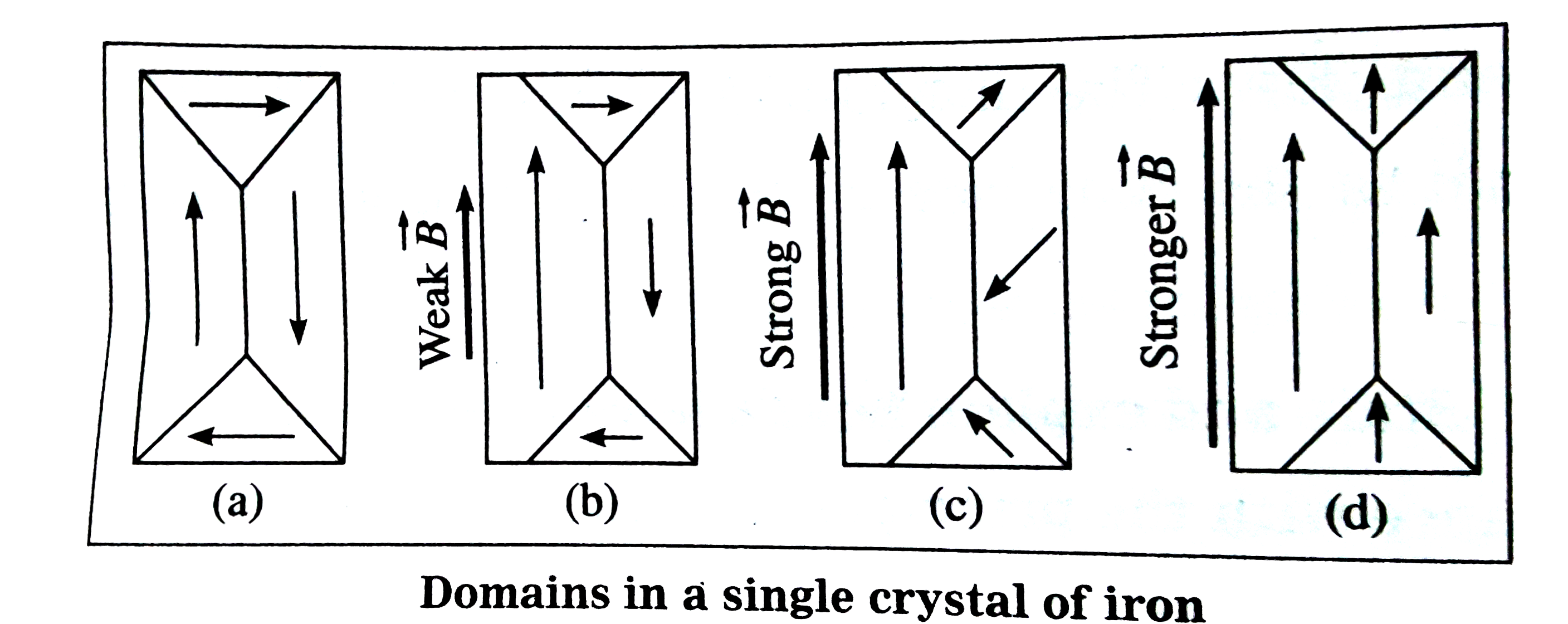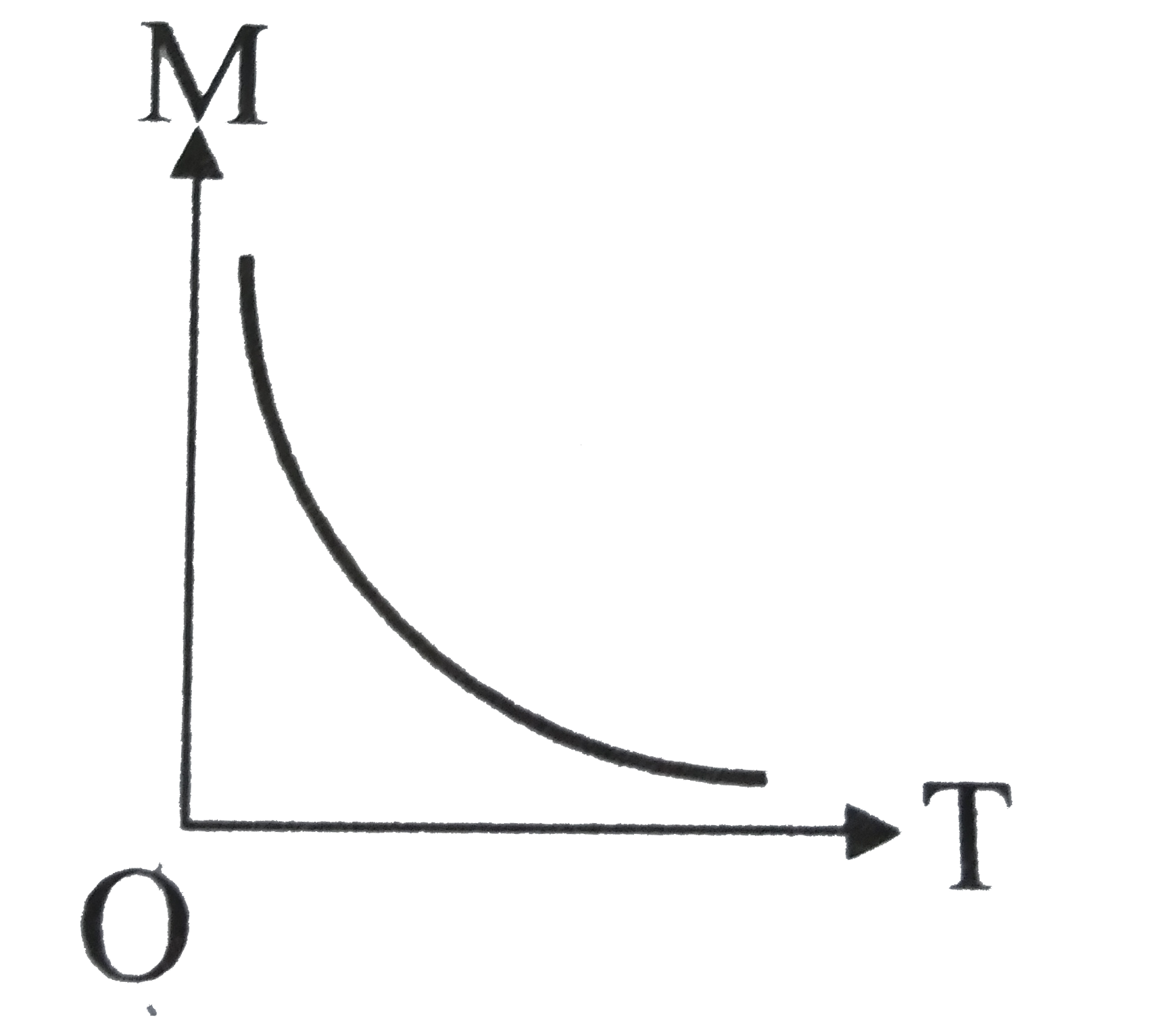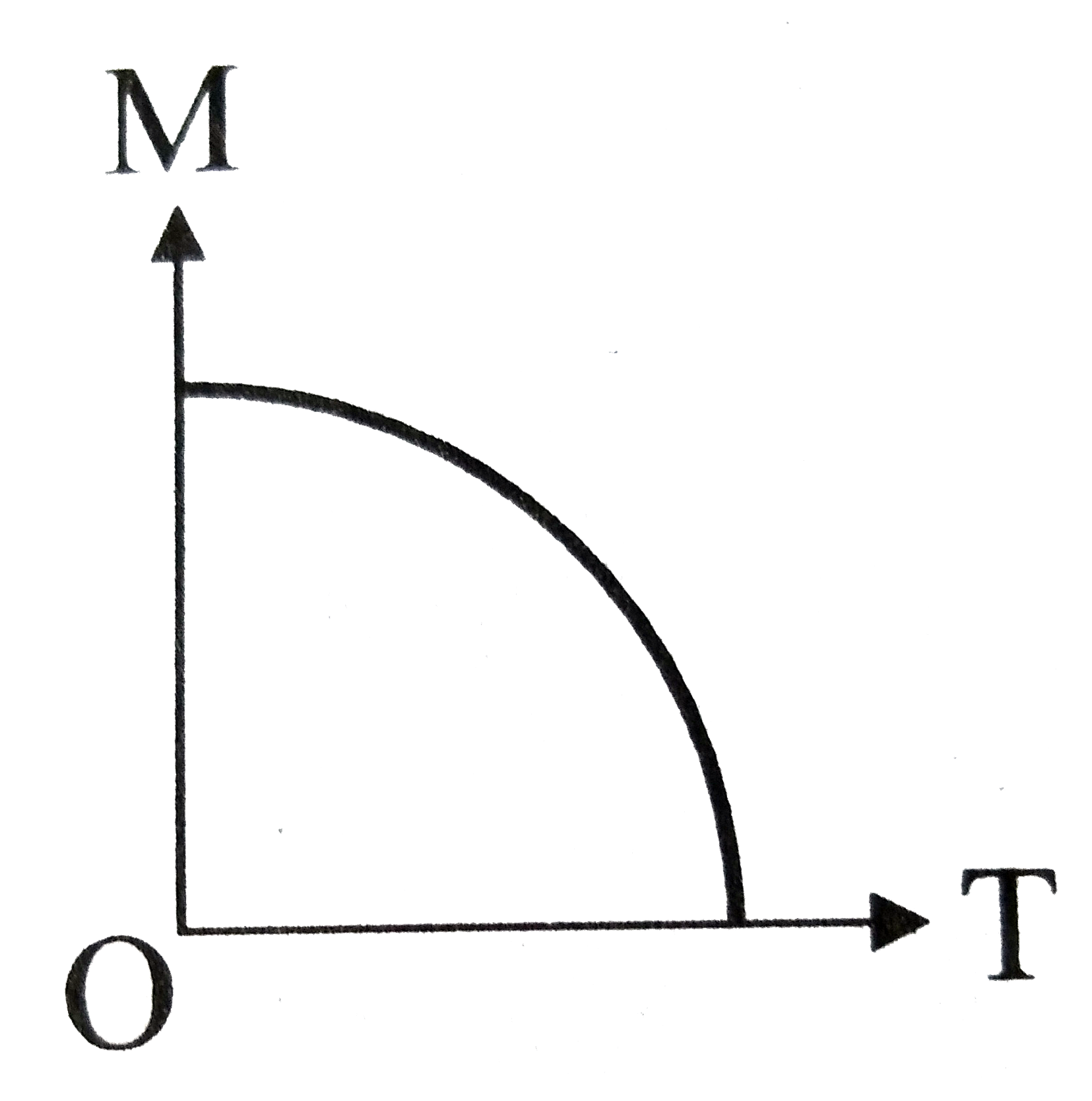Explain qualitatively on the basis of a domain picture the irreversibility in the magnetization curve of a ferromagnet.
Atoms of a ferromagnetick material have a permanent non-zero magnetic dipole moment, arising mainly from spin magnetic moments of the electrons.
According to the domain theory, a ferromagnetic is composed of small regions called domains.

A domain is an extremely small region (e.g., a size of about 10−6cm3) containing a large number of atoms (something like 1015 atoms as in common iron). Within each domain, the atomic magnetic moments of nearest-neighbour atoms interst strongly through exchange interaction (a quantum mechanical phenomenon) and align themselves parallel to each other even in the absence of an external magnetic field. A domain is therefore, s[ontaneously magnetized to saturation.
In an unmagnetized material, however, the directions of magnetization of the different domains are so oriented that the net magnetization is zero.
When an external magnetic field is applied the resultant magnetization of the specimen increases. This is achieved in either of two ways : Either a domain that is favourably oriented grows on size at the expenses of a less favourably oriented domain, or the direction of magnetization of an entire domain changes and tends to align along the external magnetic field.
When a weak magnetic field is applied, favourably oriented domains grow in size by domain boundary displacement, Fig In strong fields, the domains changes their magnetization by rotation, Figs. and. After the external field is removed, it may be energetically favourable for a domain's direaction of magnetization to perist. Then, the specimen has a permanent magnetic dipole moment. This phenomenon, called magnetic remanence, i.e., magnetic retentivity, is the basis of the existence of permanent magnets.
Topper's Solved these Questions
- LAWS AND THEORIESBOOK - NAVNEET PUBLICATION - MAHARASHTRA BOARDCHAPTER - LAWS AND THEORIESEXERCISE - Electromagnetic Induction
4 Videos
- LAWS AND THEORIESBOOK - NAVNEET PUBLICATION - MAHARASHTRA BOARDCHAPTER - LAWS AND THEORIESEXERCISE - Molecules and Nuclei
3 Videos
- LAWS AND THEORIESBOOK - NAVNEET PUBLICATION - MAHARASHTRA BOARDCHAPTER - LAWS AND THEORIESEXERCISE - Magnetic Effect of Electric Current
1 Video
- INSTRUMENTS : CONSTRUCTION AND WORKING BOOK - NAVNEET PUBLICATION - MAHARASHTRA BOARDCHAPTER - INSTRUMENTS : CONSTRUCTION AND WORKING EXERCISE - Semiconductors
6 Videos
- MODEL QUESTION PAPER BOOK - NAVNEET PUBLICATION - MAHARASHTRA BOARDCHAPTER - MODEL QUESTION PAPER EXERCISE - SECTION- D
5 Videos
Similar Questions
Explain qualitatively on the basis of domain picture the irreversibility in the magnetisation curve of a ferromagnet.
View SolutionAnswer the following question: (a) Explain qualitatively on the basis of domain picture, the irreversibility in the magnetisation curve of a ferromagnet.
(b) The hysteresis loop of a soft iron piece has a much smaller area than that of a carbon steel piece. If the material is to go through repeated cycles of magnetisation, which piece will dissipate greater heat energy?
(c) A system displaying a hysteresis loop such as ferromagnet is a device for strong memory? Explain the meaning of this statement.
(d) What kind of ferromagnet material is used for coating magnetic tapes in a cassette player, or for building memory stores in a modern computer?
(e) A certain region of space is to be shielded from magnetic fields. Suggest a method.
View Solution
Knowledge Check
Morgan explained linkage on the basis of
Aautosomal monohybrid cross in DrosophilaBautosomal dihybrid cross in NeurosporaCautosomal dihybrid cross in fruit flyDautosomal test cross in Lathyrus odoratusLenz' law is explained on the basis of
Ainertia of restBinertia of motionCmoment of inertiaDelectromagnetic inertiaA curve between saturation magnetization and temperature of a ferromagnetic sample is
A B
B C
C D
D
Explain qualitatively on the basis of a domain picture the irreversibility in the magnetization curve of a ferromagnet.
View SolutionExplain ferromagnetism.
View SolutionExplain the following terms with suitable examples :
(i) Schottky defect
(ii) Ferromagnetism.
View SolutionExplain classification of polymers on the basis of origin.
View SolutionWould the maximum possible magnetization of a paramagnetic sample be of the same order of magnitude as the magnetization of a ferromagnet?
View Solution